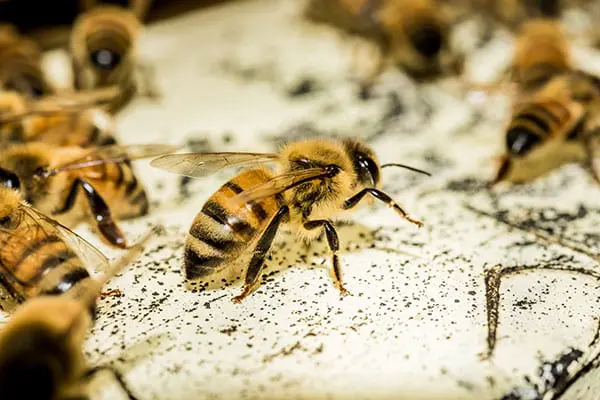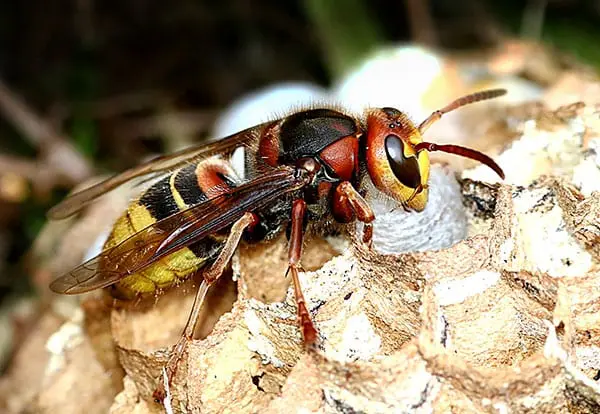Reproductive Behaviour
All species of Bees, Wasps & Hornets have four stages of development within its life cycle which are the Egg, the Larvae, the Pupae and an Adult.
- Honey Bees (Apis Mellifera) – usually reside in areas of vegetation and unusually in objects within those surroundings, though it is still common for them to in a premises or shed where shelter and warmth is present. Hives (solid and yellow in colour if it stands alone externally) are created as group collaboration by the worker bees made of secreted wax cells which are capable of holding honey and eggs becoming larvae, pupae then adults. A queen is capable of laying up to anything from 900-1,800 eggs a day (depending on the nest size).
- Wasps (Vespula Vulgaris) – will reside in most locations as long as shelter and warmth are present, though commonly form nests which are paper thin and resemble a dull grey or pine yellow colour. Queens form a small cell nest containing 10-20 eggs which become larvae, pupae then adults carrying out works to supporting and enlarging the nest. The queen will continue to lay eggs which can be anything from 3,000-5,000 (depending on the nest size).
- Hornets (Vespa Crabro) – resemble (though they are larger than) the common wasp as do their hives, though these also differ as they look fragmented or cracked with the inner cells exposed from the bottom. Besides those characteristics, they still nest within cavities walls of lofts and sheds and are built the same as a wasp nest. Their reproductive process is also the same as a wasp’s cycle.


Identifying a Infestation
There are generally three ways of identifying the mentioned pest infestations which are listed below:
Physical Sightings
The easiest way of determining an infestation is multiple or continuous Sightings of Bees, Wasps, Hornets or a Nest. A thorough check should be carried out by if not yourself, then a specialist if clustered sightings have been made.
Stings
Stings are a Swift Discomforting Pain resembling the pinch of a pin-head or needle causing irritation and intense itching. The point of entry will turn to a Red Welts then a Small Pimples. These can appear anywhere over the body.
Allergic Reactions
Most people may have severe Allergic Reactions to sting resulting in Anaphylactic Shock which is an extreme, often life-threatening reaction to which the body has become hypersensitive resulting in flushing of the skin, swelling of throat and mouth, plus more.
Identifying Bees, Wasps & Hornets
Identifying single Bees, Wasps or Hornets isn’t to difficult as the humming sound of their wings are distinguishable and significantly larger (ten times the size) than most insects.
- An adult Worker Honey Bee is approximately 12-15mm in length and their physical appearance is one of a winged, six legged Insect with large amounts of short hairs over its body and is dark orange/yellow and black in colour. They may be found clustered together in garden areas, on the external surfaces of a premises or within a loft space or shed.
- An adult Worker Common Wasp is approximately 10 – 20mm in length and their physical appearance is one of a winged, six legged Insect which is yellow and black in colour. They may be found in any environment, on any surface or in any cavity foraging for resources as a collective.
- An adult Worker Hornet is approximately 18 – 35mm in length and their physical appearance is one of a winged, six legged Insect which is yellow and brown in colour. They may be found in any environment, on any surface or in any cavity foraging for resources as a collective.
